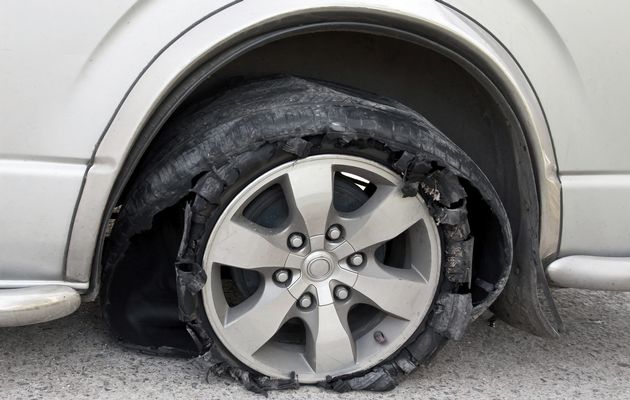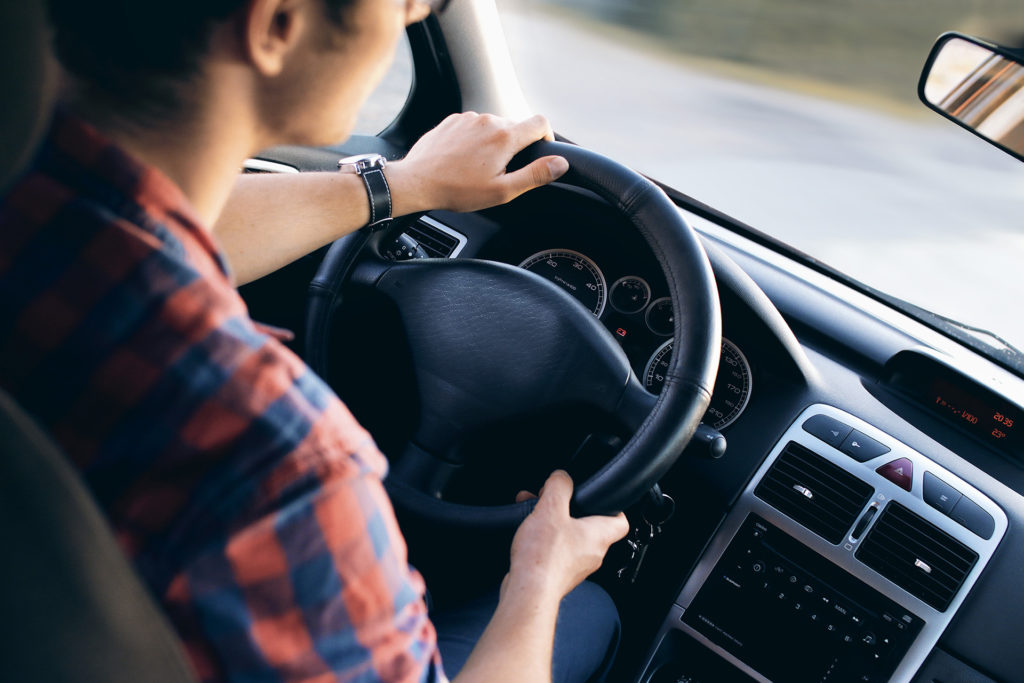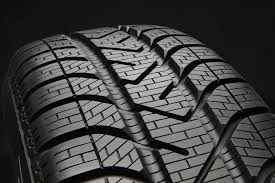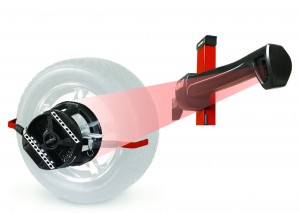
How to deal with a burst tyre
A burst tyre is possibly one of the scariest things to experience when you are behind the wheel. Luckily it’s not a particular common occurrence, but if it does happen, the most important thing is to try and remain calm. Don’t slam on the brakes in a panic, as this can have a detrimental effect and make the car spin.
Burst tyre: rear wheel affected
Chances are that if one of your rear wheels bursts, the car will begin to weave about, especially if you’re driving faster than 50mph. Don’t break – instead hold the steering wheel firmly to keep the car straight and allow the car to slow down naturally. The safest and quickest way to slow without breaking is to move down through the gears slowly.
Burst tyre: front wheel affected

When a front tyre bursts, it can often cause more steering problems than if a rear wheel burst. The car will naturally pull to the side whose tyre has burst, so you will need to counteract this by turning the wheel in the opposite direction. Again, don’t try to slow the car using the brake pedal, rather move down through the gears. If you are driving in good conditions and feel confident, you can gently pull the handbrake on and off. However, you should only attempt this if you’re strong enough to control the steering wheel with one hand.
Preventing a burst tyre

Like most things, prevention is better than cure. Making sure you take good care of your tyres and checking them regularly will help reduce the chances of a blow out occurring. Check for any bulges in the rubber – especially if you have had a minor puncture repair in the past. Every time you bang the tyre on a kerb or leave them parked into a kerb you can affect lifetime performance of the tyre. Regularly inspect your tyres for cracks in the rubber – a sign of perishing which happens to all rubber materials eventually. Heat and sun contribute to perishing, so if you live in a hot country, make sure to check your tyre quality more frequently.
It’s a good idea to check tyre pressure regularly too. You can do this easily at any garage and you can usually top them up for pennies. The correct tyre pressure for your car’s tyres is found on a metal plate attached to the driver’s front door – make sure you adjust the pressure if you are carrying any additional laden weight.

Lastly, consider getting your wheel alignment checked. If your wheels are out of alignment your tyres will wear unevenly, contributing to faster degradation and a shorted tyre life.
Your tyres are your only point of contact with the road, and so must not be undervalued when considering their importance in the overall health of your car. If you are in doubt at all, pop into your local authorised service centre and get them checked by a professional.
You can get your wheel alignment checked at any of our Aftersales departments in Byfleet and Bookham, Surrey, and Orpington, Kent.
Similar Articles
Petrol vs Diesel – Which is best for you?
In the ever-evolving world of vehicle technology, choosing your next car involves understanding many drivetrain options. While electric vehicles are gaining momentum, the advancements in petrol and diesel technologies shouldn’t be overlooked. These traditional powertrains are not just holding their ground but evolving with improved efficiency, extended range, and lower emissions. Following our comprehensive guide […]
Winter Driving Tips
Navigating UK roads in winter can be unpredictable, with weather conditions changing rapidly. Whether it’s your first time behind the wheel or you’re an experienced driver, staying safe is a top priority. In this article, we’ll look at what it takes to prepare you and your car for winter. When it comes to safety on […]
When to switch from winter to summer tyres
As the weather finally starts to turn and we head out of winter, it’s time for a little car maintenance. But why is it important to change from winter to summer tyres, and when’s the best time to do this? While your tyres might not be something you think about often, an awful lot of […]